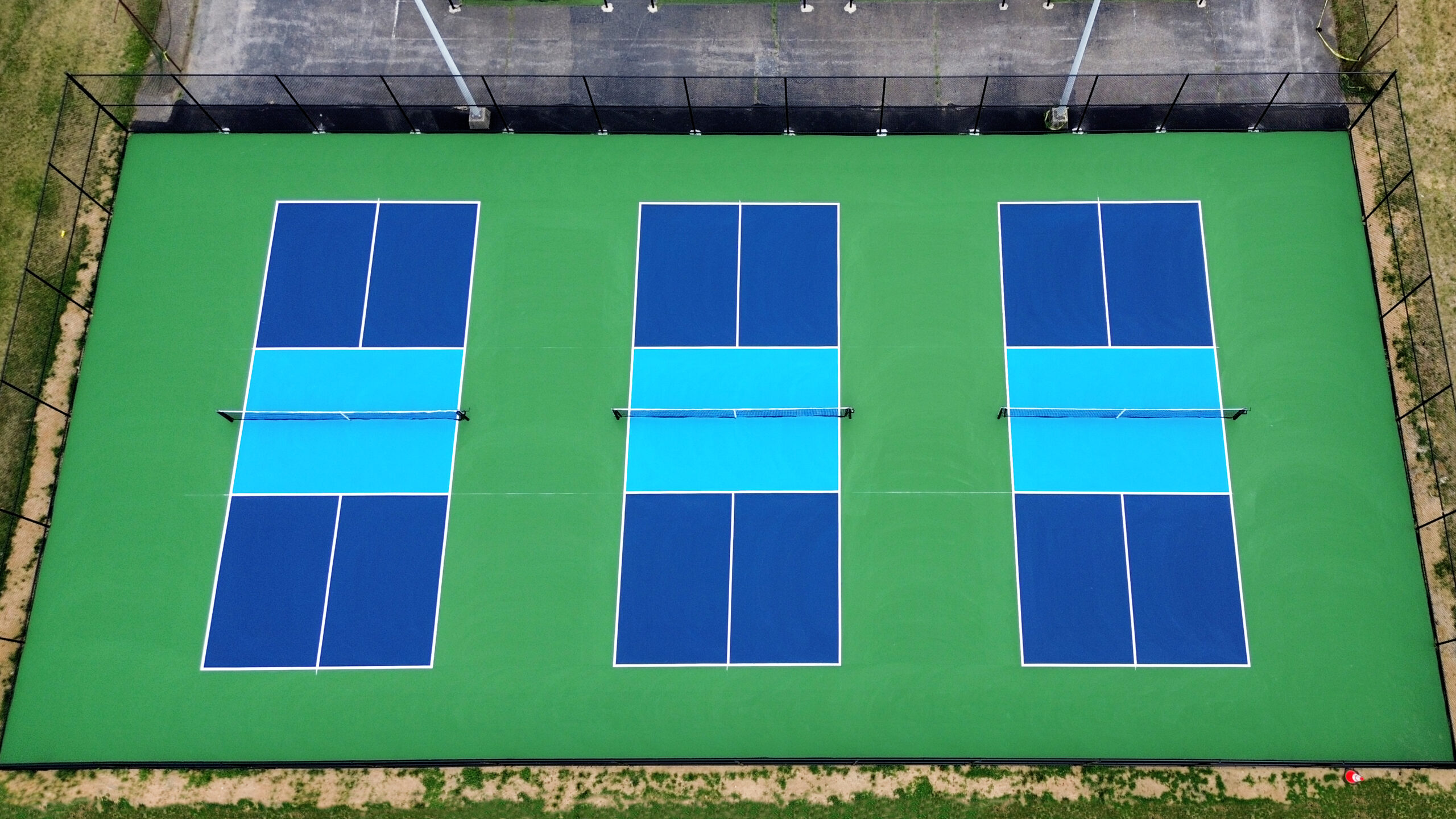Indoor and Outside Pickleball Court Construction Providers
Indoor and Outside Pickleball Court Construction Providers
Blog Article
Sustainable Practices in Pickleball Court Building You Need To Know
As the popularity of pickleball proceeds to rise, so as well does the requirement for lasting methods in court building and construction. This approach not only addresses environmental issues yet additionally enhances the durability and performance of the courts. From choosing eco-friendly products to applying reliable drainage and energy-saving illumination options, there are countless approaches to think about. Yet, the influence of these methods expands far past the court itself. Understanding how each aspect adds to a much more sustainable future invites additionally exploration into the intricate equilibrium between leisure growth and ecological stewardship.
Choosing Eco-Friendly Materials
Selecting environmentally friendly materials is a vital action in the building of lasting pickleball courts. The option of sustainable materials not only lessens ecological impact but likewise improves the durability and efficiency of the court. Secret products include recycled rubber for the surface, which uses excellent toughness and shock absorption while drawing away waste from garbage dumps.
In addition, utilizing locally sourced materials minimizes transport exhausts and sustains regional economic situations. Pickleball court construction. Utilizing indigenous hardwoods for fencing and seats can give a lasting aesthetic while making sure durability against the components.
Including permeable materials for court structures can additionally add to sustainability by permitting for natural water drain and minimizing runoff. These choices not just shield regional environments however also advertise healthier play settings.
Effective Water Drainage Solutions
While the option of environment-friendly materials is crucial, executing efficient drain solutions is similarly critical for preserving lasting pickleball courts. Proper drain not just safeguards the court surface area from water damage yet also minimizes disintegration and runoff, promoting environmental stability.
Efficient drain systems can consist of absorptive paving, which permits water to penetrate the ground instead of merging on the surface area. This reduces the likelihood of standing water, which can result in mold and other maintenance issues. Furthermore, integrating purposefully positioned water drainage networks and swales can guide excess water away from the court area, ensuring a completely dry having fun surface area and protecting against dirt disintegration.
Making use of indigenous plant life in the landscaping around the courts can further enhance drainage by absorbing excess water and reducing drainage. These plants call for much less watering and advertise biodiversity, lining up with sustainable practices.
Furthermore, it is vital to consistently preserve the water drainage system to guarantee its lasting efficiency. This includes clearing up debris and monitoring for clogs. By prioritizing effective drain remedies, pickleball court fitters can substantially add to the sustainability and long life of the facility, inevitably benefiting both players and the environment.
Energy-Efficient Lights Options
As the need for pickleball remains to expand, incorporating energy-efficient lights options right into court design has become progressively important for sustainability. Conventional lighting systems often consume too much power, adding to higher operational expenses and environmental effect. As a result, taking on modern-day, energy-efficient modern technologies is essential for both brand-new constructions and renovations.
LED (Light Emitting Diode) lighting attracts attention as a top selection as a result of its long life and energy cost savings (Pickleball court construction). Compared to conventional lights, LEDs utilize approximately 75% much less energy and can last as much as 25 times much longer, substantially minimizing maintenance prices. In addition, the directional nature of LED illumination minimizes light air see page pollution, making sure that illumination is concentrated on the court rather than surrounding areas.

Sustainable Surface Alternatives
Checking out sustainable surface area choices for pickleball courts has obtained traction among builders and players alike. The focus on environmentally friendly materials not only straightens with the growing environmental understanding however additionally boosts the performance and sturdiness of the courts.
This product offers outstanding shock absorption, reducing the threat of injuries for gamers while promoting sustainability. These tiles are very easy to change and set up, and their flexibility allows for numerous court setups.
All-natural turf courts are additionally emerging as a sustainable option, advertising biodiversity and decreasing the warm island effect. Nevertheless, they call for normal maintenance and water, which may not line up with all sustainability objectives.

Water Conservation Strategies

An additional effective strategy includes the installment of rain harvesting systems. These systems keep and accumulate rainwater for use in preserving court surface areas and landscaping. This technique not only saves drinkable water however likewise minimizes reliance on metropolitan sources.
Furthermore, using drought-resistant landscape design around the courts is essential. Indigenous plants need less water and are much better adapted to local climate problems, therefore decreasing overall water consumption. Additionally, making use of reliable irrigation systems, such as drip irrigation, ensures that water is delivered straight to plant roots, lessening evaporation and waste.
Verdict
Integrating lasting methods in pickleball court building and construction considerably adds to environmental preservation and resource efficiency. Making use of environment-friendly materials, carrying out efficient drain remedies, her explanation and embracing energy-efficient illumination alternatives can considerably reduce environmental effect. Discovering lasting surface alternatives and using water conservation strategies boost the general sustainability of these entertainment centers. By focusing on these practices, the building and construction of pickleball courts can align with broader ecological goals while advertising durability and functionality within areas.
As the appeal of pickleball continues to rise, so navigate here too does the demand for sustainable practices in court building.Choosing environmentally friendly products is an essential step in the building and construction of sustainable pickleball courts. By prioritizing energy-efficient illumination choices, pickleball court producers can contribute to a more lasting future while meeting the demands of gamers and stakeholders alike.Incorporating lasting surface area choices not only improves the efficiency of pickleball courts but also paves the way for implementing reliable water conservation strategies.Including lasting practices in pickleball court construction dramatically contributes to environmental conservation and resource effectiveness.
Report this page